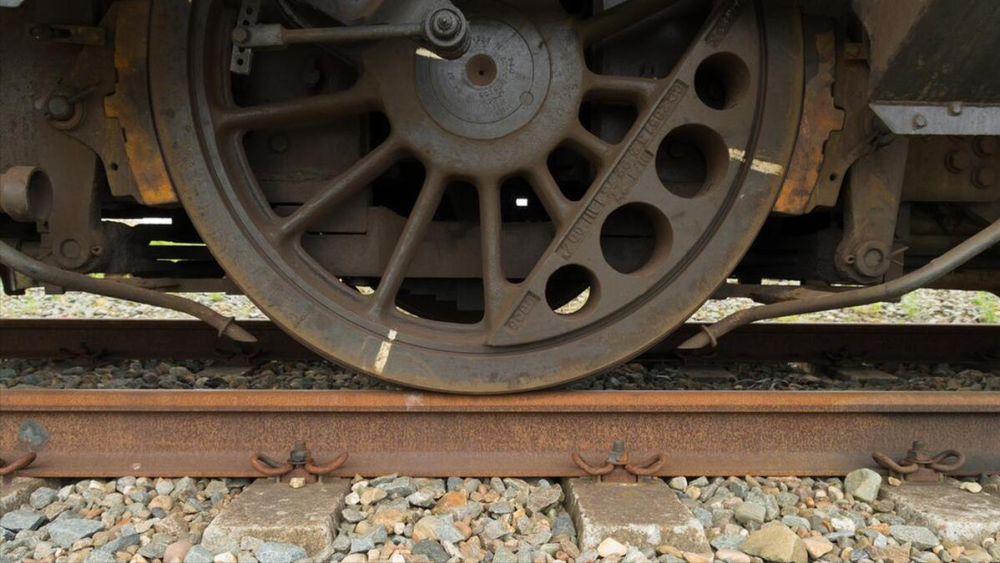In the field of railway transportation, the wheel - rail relationship is of utmost importance as a key factor in ensuring the safe operation of trains, efficient transportation, and reasonable cost control. The interaction between wheels and rails is like the joints of the human body, closely connecting trains and tracks, and directly influencing the stability and development of the entire railway transportation system. Next, let's deeply explore the specific impacts of the wheel - rail relationship on railway transportation and a series of effective measures taken to maintain a good wheel - rail relationship.
The wheel - rail relationship has a crucial impact on aspects such as the safety, efficiency, and cost of railway transportation. The following are its specific impacts and maintenance measures:
· Impact on Operational Safety: The contact state and interaction forces between wheels and rails are directly related to the driving stability and safety of trains. If the wheel - rail contact is poor, for example, if the wheel has a flat spot or the rail has severe wear and deformation, it may cause violent vibrations during train operation and even derailment, endangering the lives and property of passengers.
· Impact on Operational Quality: A good wheel - rail relationship can ensure the smooth operation of trains, reduce vibrations and noise, and provide passengers with a comfortable riding environment. Conversely, a poor wheel - rail relationship will intensify vibrations and noise, affecting the passengers' riding experience. At the same time, it will also increase the wear of train components and shorten their service life.
· Impact on Operational Costs: The wear and fatigue damage of wheels and rails will increase the frequency of maintenance and replacement, thus increasing operational costs. Frequent maintenance operations will also lead to line interruptions, affecting transportation efficiency and causing indirect economic losses.

· Wheel Inspection: Nondestructive testing techniques such as ultrasonic and magnetic particle inspection are used to regularly check the tread wear, flange thickness, and cracks of wheels. At the same time, a wheel profile measuring instrument is used to accurately measure the geometric dimensions of wheels to ensure that they meet the standard requirements.
· Rail Inspection: Equipment such as rail flaw detection vehicles and portable flaw detectors is used to conduct periodic flaw detection on rails to promptly detect internal cracks, shell - like defects, and other defects in the rails. In addition, it is also necessary to regularly measure the wear of rails, including the lateral wear and vertical wear of the rail head, in order to understand the wear state of the rails.
· Flange Lubrication: Special lubricating grease is applied to the flange of train wheels, which can effectively reduce the friction coefficient between the flange and the side of the rail, reduce the wear of the flange and the rail, and also help the train pass smoothly when running on curves, reducing the effect of lateral forces on the wheel - rail.
· Rail Surface Lubrication: By spraying lubricants on the rail surface, the friction between the wheel and the rail tread is reduced, the rolling resistance is decreased, and the generation of tread wear and fatigue cracks is reduced. Especially in areas with large wheel - rail forces such as long slopes and curve sections, the effect of rail surface lubrication is more significant.
· Wheel Repair: For wheels with minor wear, the turning process can be used. By machining the wheel tread and flange, they can be restored to the standard size and shape. For wheels with cracks or other serious damage, new wheels need to be replaced in a timely manner to ensure driving safety.
· Rail Repair and Replacement: When there is local wear or damage to the rail, repair techniques such as rail grinding and welding can be used for treatment. For rails with severe wear that cannot be used continuously through repair, they need to be replaced in a timely manner. When replacing rails, it is necessary to strictly control the welding quality and laying accuracy of the rails to ensure a good connection between the new rails and the existing lines.
· Track Optimization: Reasonably design the horizontal and vertical sections of the track to reduce unfavorable factors such as small curve radii and sudden slope changes, and reduce the forces between wheels and rails. At the same time, strengthen the maintenance of the track to ensure the smoothness of the track, and reduce track irregularities such as unevenness and alignment deviations, providing a good operating foundation for trains.
· Vehicle Design Improvement: Optimize the bogie structure of the vehicle to improve the dynamic performance of the vehicle, making the distribution of wheel - rail forces more uniform. In addition, the use of advanced wheel and rail materials to improve their wear resistance and fatigue resistance also helps to improve the wheel - rail relationship and extend the service life of wheels and rails.
In conclusion, the wheel - rail relationship is a crucial link in the railway transportation system. By deeply understanding its impacts on various aspects of railway transportation and strictly implementing maintenance measures such as regular inspection, reasonable lubrication, timely repair and replacement, and optimizing track and vehicle design, we can effectively ensure the good state of the wheel - rail relationship. This, in turn, ensures the safe and efficient operation of railway transportation, reduces operational costs, and provides passengers with a more comfortable and reliable travel service. With the continuous progress of railway technology, the research and optimization of the wheel - rail relationship will also continue to deepen, injecting new vitality into the sustainable development of the railway industry.
Copyright © Wuhan Linkage Track Equipment Co., Ltd All Rights Reserved.